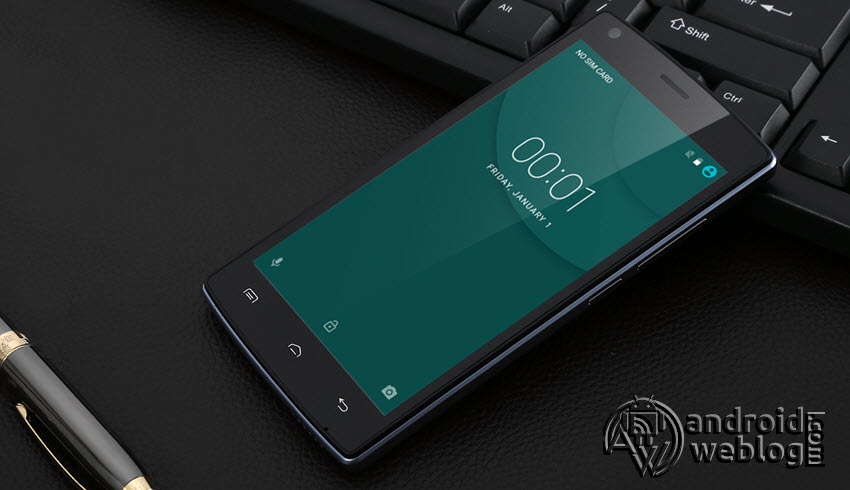How to Root Samsung Galaxy Note 20 Ultra SM-N985F/DS using Magisk (Without TWRP)

This tutorial will guide you to root Samsung Galaxy Note 20 Ultra without requiring to flash TWRP Recovery. Rooting with Magisk is an easy method, and doesn’t need technical skills much. If you own a Samsung Galaxy Note 20 Ultra, and you want to perform numerous things that usually are not possible with Stock Android ecosystem, then you must root your device. Though, to flash the rooting file, you must unlock the bootloader of your device.
For those who do not know – it is certainly possible to install Magisk and root your phone without flashing TWRP at all. If you are an Android Enthusiast, and want to Root, in the due course of the article, we will guiding you through the process to root Samsung Galaxy Note 20 Ultra using Magisk method.
Table of Contents
A Brief Intro to Samsung Galaxy Note 20 Ultra
The Samsung Galaxy Note 20 Ultra features the specifications Chipset Exynos 990 (7 nm+) – Global/ Qualcomm SM8250 Snapdragon 865 5G+ (7 nm+) – USA CPU/ Processor Octa-core (2×2.73 GHz Mongoose M5 & 2×2.50 GHz Cortex-A76 & 4×2.0 GHz Cortex-A55) – Global/ Octa-core (1×3.0 GHz Kryo 585 & 3×2.42 GHz Cortex-A77 & 4×1.80 GHz Cortex-A55) – USA, GPU Mali-G77 MP11 – Global/ Adreno 650 – USA OS Android 10, upgradable to Android 11, One UI 3.0 Display 6.9 inches, 116.7 cm2 (~91.7% screen-to-body ratio)/ Dynamic AMOLED 2X, 120Hz, HDR10+/ 1440 x 3088 pixels (~496 ppi density)/ Corning Gorilla Glass Victus/ Always-on display/ 120Hz@FHD/60Hz@QHD refresh rate Internal Storage/ RAM 256GB 8GB RAM, 256GB 12GB RAM, 512GB 8GB RAM, 512GB 12GB RAM
Main Camera 108 MP, f/1.8, 26mm (wide), 1/1.33″, 0.8µm, PDAF, Laser AF, OIS/ 12 MP, f/3.0, 120mm (periscope telephoto), 1.0µm, PDAF, OIS, 5x optical zoom, 50x hybrid zoom/ 12 MP, f/2.2, 120˚, 13mm (ultrawide), 1/2.55″, 1.4µm/ LED flash, auto-HDR, panorama/ 8K@24fps, 4K@30/60fps, 1080p@30/60/240fps, 720p@960fps, HDR10+, stereo sound rec., gyro-EIS & OIS Selfie Camera 10 MP, f/2.2, 26mm (wide), 1/3.2″, 1.22µm, Dual Pixel PDAF/ Dual video call, Auto-HDR/ 4K@30/60fps, 1080p@30fps Battery Li-Po 8000 mAh, non-removable/ Fast charging 45W, 100% in 80 min Model Number Li-Ion 4500 mAh, non-removable/ Fast charging 25W/ USB Power Delivery 3.0/ Fast Qi/PMA wireless charging 15W/ Reverse wireless charging 4.5W
What is Root? Why Root?
‘Root’ refers to a storage unit, which acts as a topmost folder/ directory in the operating system, which holds data from various sections i.e. apps, systems and users. The primary job of this ‘root’ directory is to transfer data across every sections of the phone’s operating system. If you want to unleash the full potential of the hardware of your Samsung Galaxy Note 20 Ultra , then rooting and flashing custom recovery like TWRP is the main concern.
Advantages of rooting Samsung Galaxy Note 20 Ultra?
- The Stock ROMs have often limited and unsupported features in the sense of Customization. When you have a rooted device and also flashed TWRP recovery, then you are free to install any Custom ROMs, Mods, Kernel, and Xposed Framework and Xposed module support etc., as well as many apps which requires root access to work properly.
- Get access of all the files in the ‘root’directory of your phone.
- New phones often comes with bloatware pre-installed by OEM/ manufacturers. After gaining root access, user can uninstall all bloatware on Samsung Galaxy Note 20 Ultra.
- Block ads on any installed apps, like YouTube, Chrome etc.
- Increase battery life, and gain better performance by overclocking the CPU.
Disadvantages of rooting Samsung Galaxy Note 20 Ultra?
- One of the top most risk of rooting device is that during the process, Android device can ‘brick’. Once an Android phone is ‘bricked’ it usually turns unresponsive, won’t power on, and doesn’t function normally anymore.
- Rooting voids manufacturer warranty permanently
- Rooting or overclocking can cause the problem of ‘overheating’
- No more updates; the device would stop receiving any OTA firmware updates released by manufacturer from time to time with bug fixes, security patches for the Android operating system.
Disclaimer: The AndroidWeblog.com covers although everything in a very neat and a processed manner so that our readers get exactly what they want, still there are meager chances of basic issues that may arise out of the listed steps here. Hence it is in sole interest of the user to follow the steps very cautiously so as to stay away from any mishappenings with your device.
Rooting and flashing the Custom ROM firmware, certainly without any doubt voids your devices warranty and AndroidWeblog.com in no way will be held responsible for warranty void or your bricked device.
Prerequiste
Ensure to check your model number, which must be:
- Samsung Galaxy Note 20 Ultra
You must have to ensure that prior to rooting your phone , you have read thoroughly the disclaimer and you agree to proceed further on your risk.
- Phone Should be Charged
Your phone must be 70% charged at least, else, it may lead to complications sometimes while experimenting. Why to take risk, try to charge it fully.
- Back Up
If you are either going to root your phone or install a Custom ROM, it is a good habit to make a back up of your phone. Make a back up of all your media like images, videos and all on your PC and your contacts on Cloud.
- Enable USB Debugging
(Applicable only for PC method, Skip if you will use APK method)
You must enable USB debugging option by going in to Settings, Applications and Developer options.
Downloads For Rooting Samsung Galaxy Note 20 Ultra
Make sure that you have downloaded the required files (link in the pre-requisite section of this article). Then, proceed to the steps.
Procedure to Root Samsung Galaxy Note 20 Ultra (Without TWRP with Magisk)
Part 1: Preparing the boot image: Extract and Patch Boot.image using Magisk?
Step 1: First of everything, download stock ROM in your PC, and then extract the stock ROM in your PC.
Step 2: Now, connect your Samsung Galaxy Note 20 Ultra with your PC, and transfer boot.img from the extracted folder to the internal storage of your device.
Step 3: Launch Magisk Manager as suggested previously in the pre-requisite section. When a popup arrives at the screen asking you to install Magisk, simply select Install>Install.
Step 4: Then, you will get two options, Download Zip only and Patch Boot Image File, simply tap on the option Patch Boot Image File, and select the boot image file transferred earlier in internal storage of your device.
Step 5: Once the boot image file is selected, in a matter of just couple of seconds, Magisk will start patching the boot.img file. Once the boot image file is patched, simply copy the patched_boot.img from internal storage of your device, and then replace the same in extracted ROM folder on your computer.
Odin flash tool accepts flash file in .tar format. So, just use tools like 7zip, WinRar etc. to archive boot.img file to the .tar format. We will learn how to flash the patched boot.image file on your device using Odin Flash tool in the next part.
Then, move forward to the second part to flash the patched boot.img file on your Samsung Galaxy Note 20 Ultra device.
Part 2: Patching the boot image: How to Install the patched Boot.image on Samsung Galaxy Note 20 Ultra using Odin Flash Tool?
Step 1: First of all, put the Samsung Galaxy Note 20 Ultra into the download/odin mode. Turn off the device, and then press and hold Volume Up + Power buttons simultaneously till the device logo appears on the screen.
Step 2: Once the Samsung logo appears, release Power button but hold the others few more seconds.
Step 3: Release all of the buttons altogether, once the Recovery Mode screen appears. If you see Android logo with No Command text, don’t panic and just wait for a few seconds. You can use the Volume Up and Volume Down buttons to scroll up or down, and the Power button to select an option.
Step 4: Connect the Samsung Galaxy Note 20 Ultra to the PC. Once device gets connected, open the download ODIN.exe file.
Step 5: Once the device is connected, Odin interface will display the blue sign. Now, load the patched boot.tar file in the AP section.
Step 6: Now, on the Odin Interface, switch to the Options tab, then check whether Auto Reboot and F-Reset Time options are ticked/ selected or not. If not selected already, then just select the both options.
Caution: Don’t select re-partition option
Step 7: Next, click on the Start button to start flashing patched boot image file, this will root your device. Once the boot image file has done installing, the device will boot within few seconds.
Verify the Systemless Root on Samsung Galaxy Note 20 Ultra
Congratulations, now you have rooted Samsung Galaxy Note 20 Ultra. Now, you can install Xposed Framework, and customize your smartphone as per your preference. If you wish to verify, you may launch Magisk Manager app. If everything goes well, all the options on the Magisk interface should be green ticked, confirming that device has bypassed the Google SafetyNet measure, latest version of Magisk installed, and properly rooted with MagiskSU.












